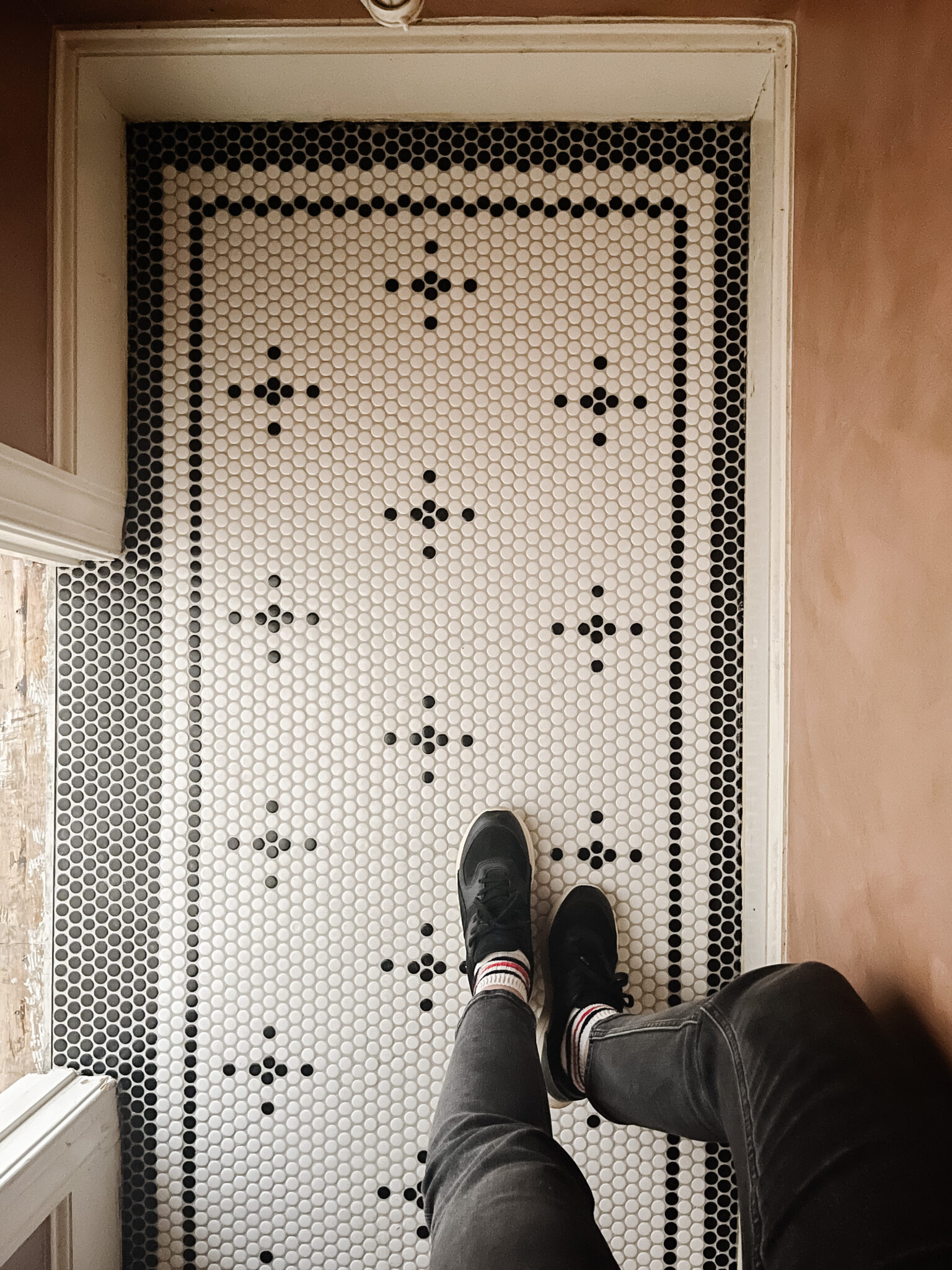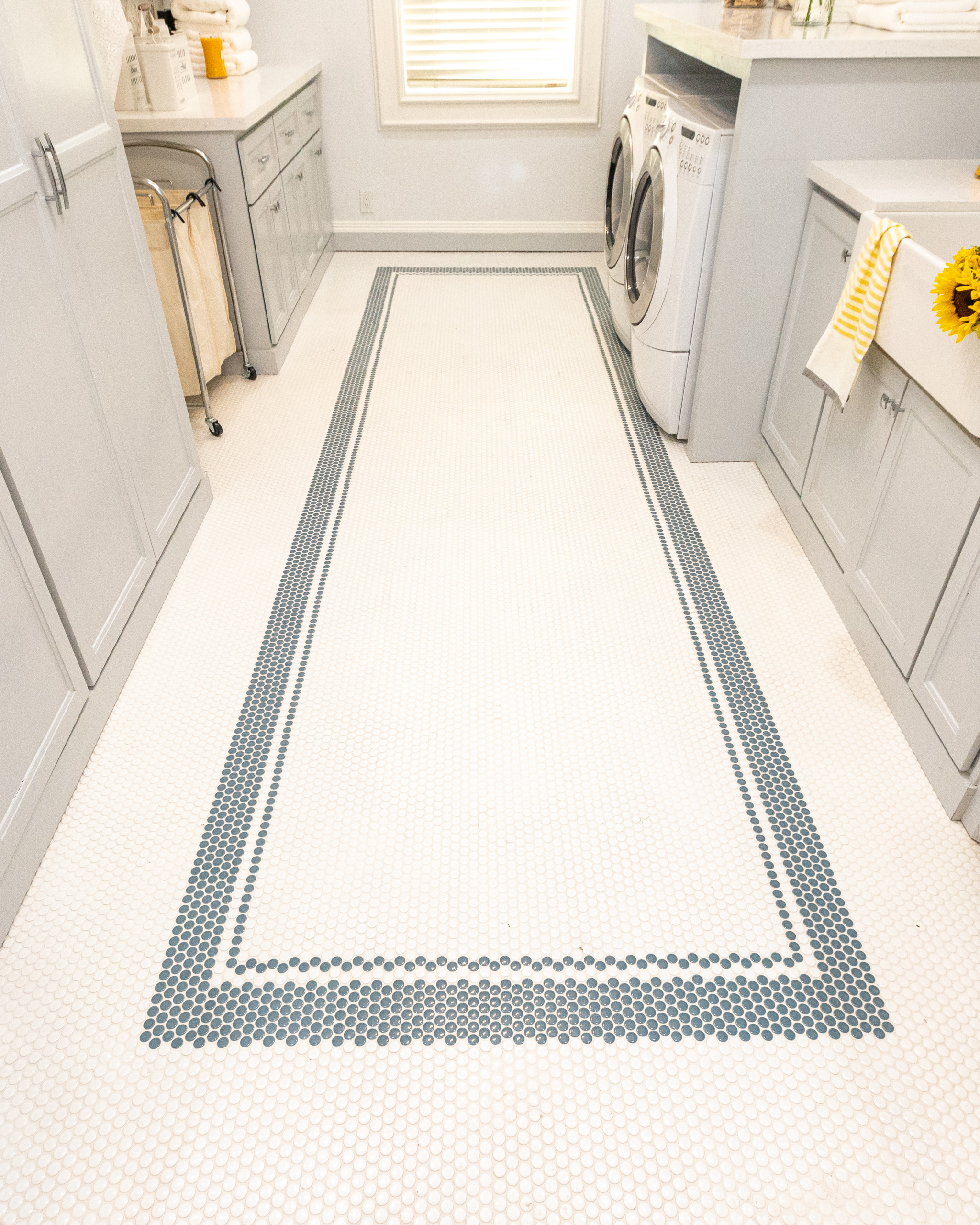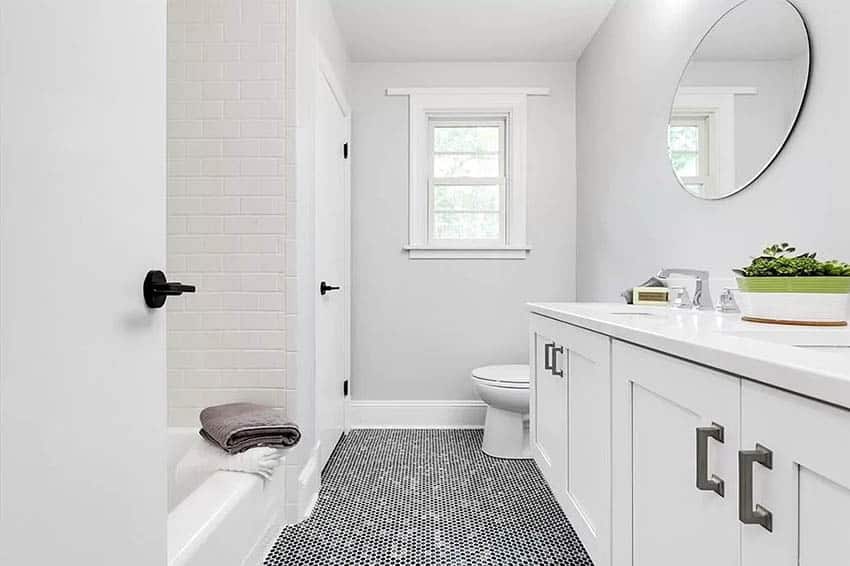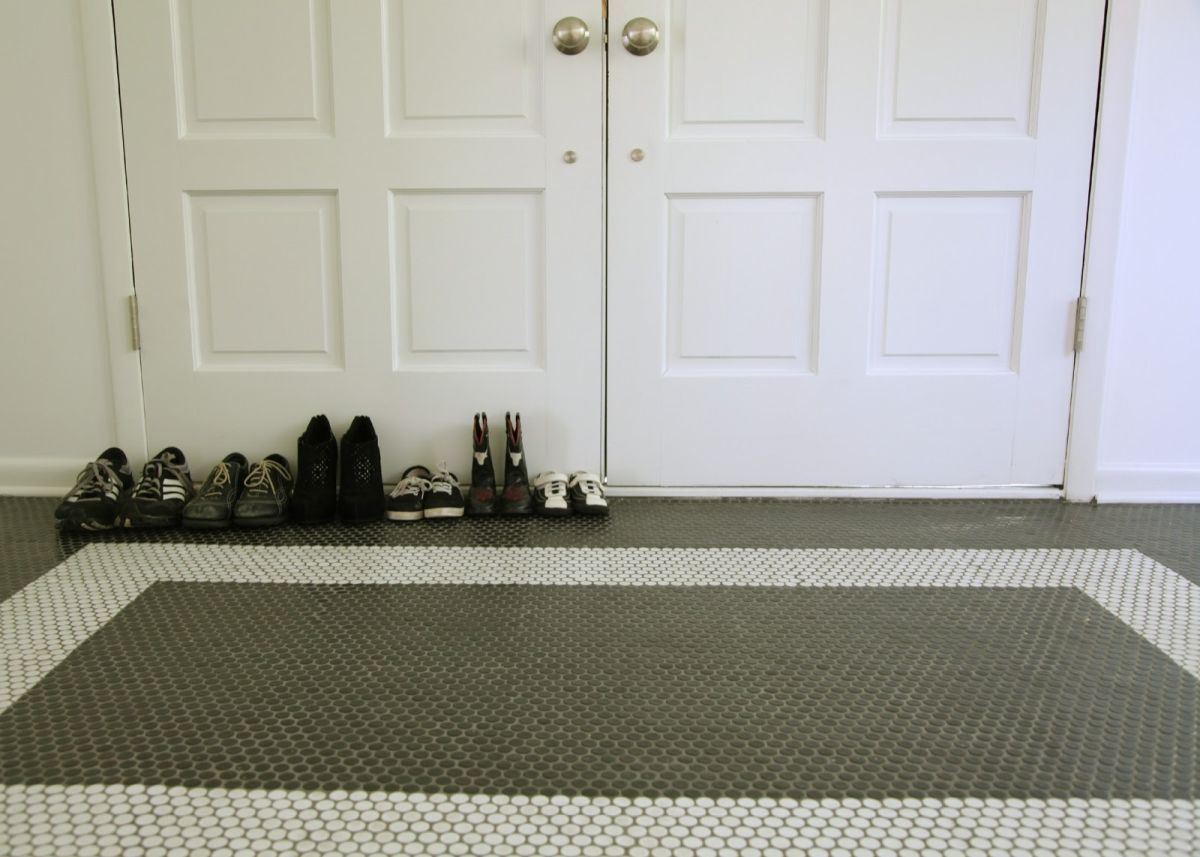What Is Penny Tile? An Overview of This Timeless Flooring Option
If you’re considering unique and timeless options for your kitchen floor, penny tile might be exactly what you’re looking for. Known for its classic charm, penny tile features small, round tiles about the size of a penny, arranged in patterns that create a distinctive look. Here’s everything you need to know about penny tile to see if it’s the right choice for your kitchen.
- Origin and History of Penny Tile
Penny tiles have a rich history dating back to the early 20th century. They were widely used in bathrooms, kitchens, and even entryways due to their practicality and style. Today, penny tiles remain a classic design choice for those wanting a touch of vintage appeal with a modern twist. - Material Options: Ceramic, Porcelain, and Glass
Penny tiles are available in several materials, each with its look and feel. Ceramic and porcelain penny tiles are the most popular choices, offering durability and resistance to moisture. Glass penny tiles, on the other hand, add a glossy finish and reflect light beautifully, ideal for creating an airy, spacious effect. - Variety in Colors and Patterns
One of the best aspects of penny tile is its versatility in design. Penny tiles come in an endless array of colors and shades, from neutral whites and blacks to vibrant greens and blues. You can also create intricate patterns, like flowers or borders, adding a unique touch to your kitchen floor. - Textured Look and Feel
Penny tiles have a unique texture that adds visual interest to any floor. The small, rounded shape of each tile provides a subtle, slightly raised texture underfoot, which not only feels comfortable but also adds character to your space. - Slip Resistance for Safety
Kitchens can be prone to spills, and penny tiles offer a surprising benefit in terms of safety. Because of their small size and the numerous grout lines, penny tile floors provide natural traction, helping prevent slips—a practical advantage in a high-traffic area like the kitchen. - A Versatile Choice for Many Styles
Penny tile’s charm is that it can complement various kitchen styles, from vintage and farmhouse to modern and minimalist. Whether you’re looking for a nostalgic throwback or a sleek modern touch, penny tile can be tailored to fit your aesthetic, making it a timeless option for any kitchen.

Pros and Cons of Penny Tile for Your Kitchen Floor
As charming as penny tiles are, it’s essential to weigh their pros and cons to determine if they’re a good fit for your kitchen floor. Here’s a balanced look at the advantages and potential drawbacks of penny tiles to help you make an informed choice.
Pro: Timeless Aesthetic Appeal
Penny tiles have a classic look that can elevate any kitchen. Their distinct, small circular design offers a timeless, almost vintage appeal that works beautifully in both traditional and modern kitchens, adding unique character to the space.
Pro: Durability and Longevity
When properly installed and sealed, penny tiles, particularly those made of ceramic or porcelain, are extremely durable. They withstand daily wear and tear, making them ideal for a kitchen floor that sees a lot of foot traffic.
Pro: Slip-Resistant Surface
Thanks to the many grout lines between the tiles, penny tile floors offer better slip resistance than larger tiles. This feature can be especially valuable in a kitchen, where spills and splashes are common.
Con: Intensive Cleaning Needs
While penny tiles look stunning, they can be more challenging to keep clean than larger tiles. The numerous grout lines can accumulate dirt and grime, requiring regular cleaning to maintain their appearance. Using a grout sealer can help reduce this issue, but it’s something to consider.
Con: Installation Complexity
Installing penny tiles can be more labor-intensive than standard tiles due to their small size and the need for precise alignment. While it’s possible to do it yourself, hiring a professional installer may be a good idea to ensure a high-quality finish.
Con: Higher Cost for Some Materials
While ceramic and porcelain penny tiles are reasonably priced, certain materials, like glass or custom finishes, can increase the overall cost. If you’re working within a budget, you’ll want to factor in the cost of materials and any extra installation expenses.
Choosing the Right Color and Finish for Your Penny Tile Kitchen Floor
Selecting the right color and finish for your penny tile kitchen floor can transform your kitchen’s look and feel. Here’s a guide to help you choose a color and finish that complements your style and enhances your kitchen’s overall ambiance.
Classic White or Black for Timeless Appeal
White and black penny tiles are classic choices that add sophistication to any kitchen. White tiles give a fresh, clean look, while black tiles create a bold, modern statement. Either option pairs beautifully with various cabinetry colors and adds a timeless elegance to your space.
Earthy Tones for a Natural Vibe
If you’re drawn to a more organic, earthy style, consider penny tiles in shades like beige, brown, or olive green. These colors add warmth and complement wood cabinets and stone countertops, creating a cozy, welcoming environment.
Bold Colors for a Modern Twist
Bright penny tiles in hues like blue, red, or green can bring a fun, modern twist to your kitchen. Bold colors can be used for the entire floor or as accents, like borders or patterns, for a pop of personality. This choice is perfect for those who enjoy a more playful design approach.
Matte vs. Glossy Finishes
The finish you choose will also impact the overall look. Matte penny tiles give a soft, subtle appearance, ideal for a natural or rustic style. Glossy tiles, on the other hand, reflect light, making a kitchen appear brighter and more spacious. Consider how much natural light your kitchen gets when choosing a finish.
Mixing and Matching Colors for Unique Patterns
Penny tiles allow you to get creative by mixing colors. Create eye-catching patterns, such as checkered designs or floral motifs, to add a unique touch to your floor. This approach allows you to personalize your kitchen and make it truly one-of-a-kind.
Consider the Kitchen’s Lighting and Size
The color and finish of your tiles will look different depending on your kitchen’s lighting and size. Dark tiles in a small kitchen can make it feel more enclosed, while lighter tiles in a glossy finish can open up the space. Think about your kitchen’s dimensions and lighting to find the best match.
Installation Tips: How to Lay Penny Tile in the Kitchen
Installing penny tiles in the kitchen can be a rewarding DIY project, though it does require careful planning. Here’s a step-by-step guide to help you achieve a smooth, professional-looking penny tile installation.
Prepare the Subfloor for a Smooth Surface
Start by ensuring your subfloor is clean, level, and free of any debris. Use a leveling compound if necessary to create a flat surface, as an uneven subfloor can cause tiles to sit unevenly, leading to an inconsistent finish.
Dry-Fit the Tiles for a Test Run
Before you start with adhesive, do a “dry fit” by laying out the penny tiles in place. This allows you to see how they’ll look and make any necessary adjustments. During this step, pay attention to spacing and ensure that all sheets align correctly.
Apply Tile Adhesive Evenly
Spread tile adhesive with a notched trowel, working in small sections. Apply only as much adhesive as you can cover with tiles before it dries. Press each tile sheet into the adhesive firmly, and check alignment frequently to keep rows straight.
Use Spacers for Consistent Grout Lines
Even though penny tiles are small, using spacers can help maintain consistent spacing between sheets. This will ensure uniform grout lines across the floor and give the installation a cleaner, more polished look.
Grouting the Tiles Carefully
Once the adhesive has set, apply grout across the tiles using a grout float. Be sure to push the grout into all the gaps, then wipe off any excess with a damp sponge. Penny tiles have a lot of grout lines, so take your time to achieve a neat finish.
Seal the Grout for Longevity
Once the grout is dry, apply a grout sealer to protect against stains and moisture. This is especially important in a kitchen, where spills are common. A high-quality grout sealer will make cleaning easier and help maintain the tiles’ appearance over time.
Maintenance and Cleaning Tips for a Long-Lasting Penny Tile Floor
Penny tile floors are generally low-maintenance, but regular cleaning is essential to keep them looking their best. Here’s how to care for your penny tile kitchen floor and ensure its longevity.
Sweep or Vacuum Regularly
Regularly sweeping or vacuuming the floor will prevent dust and dirt from accumulating in the grout lines. A vacuum attachment for hard floors works well to remove crumbs and debris from the tiles without scratching the surface.
Mop with a Mild Cleaner
Mopping your penny tile floor with a mild cleaner is ideal for maintaining its shine. Avoid using harsh chemicals that can damage the grout or tile finish. Instead, a solution of warm water and mild dish soap will clean the floor without stripping its natural luster.
Focus on Grout Cleaning
The grout lines in penny tile floors can trap dirt, so occasional deep cleaning is essential. Use a soft brush and a baking soda paste to gently scrub the grout lines. This will help remove stains and keep the floor looking fresh.
Address Spills Quickly
Although penny tiles are relatively stain-resistant, it’s still wise to clean up spills promptly, especially acidic substances like tomato sauce or citrus juice. Quick cleanups will prevent staining and help maintain the grout’s color.
Reapply Grout Sealer Periodically
Over time, grout sealers wear off, especially in high-traffic areas. Reapplying a grout sealer every year or two will keep the grout looking new and make cleaning easier. This extra step ensures your floor stays protected and looking its best.
Use Floor Mats in High-Traffic Areas
Place floor mats in high-traffic areas, like near the sink or stove, to protect the tile from heavy wear. Mats will help reduce dirt buildup and provide extra traction, making your penny tile floor last even longer.
Design Ideas: Creative Ways to Style Your Penny Tile Kitchen Floor
Penny tiles offer endless design possibilities, allowing you to create a truly unique kitchen floor. Here are some inspiring design ideas to help you get the most out of this versatile flooring option.
Monochromatic Looks for a Sleek Finish
For a simple yet elegant look, opt for a monochromatic penny tile design. White, gray, or black penny tiles provide a cohesive, clean look that works well in minimalist or modern kitchens. This approach is timeless and pairs well with a range of cabinet colors.
Patterned Borders for Added Interest
Adding a border around your penny tile floor can make a bold design statement. You can create a contrasting border using a different color, like black tiles on a white floor, or go for a subtle change in shade to define the space beautifully.
Ombre Effect for a Unique Touch
An ombre effect with penny tiles gradually shifts colors from light to dark, creating a gradient effect that’s sure to catch the eye. This design works exceptionally well in larger kitchens and adds a dynamic, modern flair.
Floral or Geometric Patterns
Penny tiles are small enough to form intricate patterns, like floral designs or geometric shapes. These patterns can serve as a focal point, adding a decorative touch to your kitchen. Consider incorporating these designs as accents or even covering an entire floor for a bolder look.
Contrasting Grout for a Modern Twist
Choosing a grout color that contrasts with your tile can make each penny tile pop. For instance, white penny tiles with black grout create a striking, contemporary look. This style works especially well in kitchens that have a bold, modern design aesthetic.
Mixing Matte and Glossy Finishes
For added texture and dimension, consider mixing matte and glossy penny tiles in the same color. This combination creates a subtle yet unique effect that reflects light differently and adds interest without overwhelming the space.
penny tile floor in kitchen with black accent border Kitchen
A Heated Internal Debate – Are There Some Tiles That Are More
Penny Tile Floor
Penny Tile Floor Designing Idea
Penny Tiles: Stunning Home Project Ideas
Penny Tile Designs That Look Like A Million Bucks
Related Posts:









